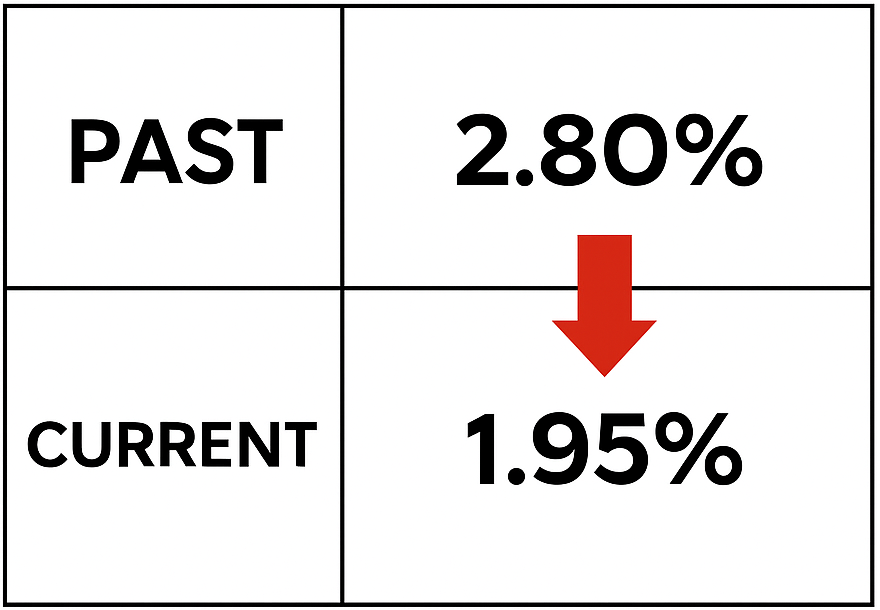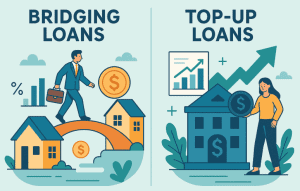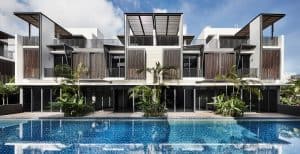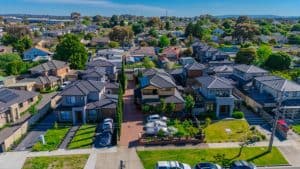Thinking of buying your first home in Singapore? Getting a BTO flat is one of the most affordable ways to own a home here, but the process can seem a little overwhelming at first. From figuring out who can apply for a BTO to understanding the different flat types, CPF housing grants, and the application process, there’s a lot to take in.
Don’t worry — this guide has you covered. I’ll break down how to apply for a BTO flat in Singapore step by step, share insider tips to improve your chances, and highlight the latest updates for 2025. Whether you’re a young couple eager to set up your first home or a single buyer exploring your options, you’ll find everything you need right here.
BTO Eligibility Criteria in Singapore

Dreaming of owning a BTO flat in Singapore? Before you dive in, it’s crucial to understand if you qualify. Here’s everything you need to know about eligibility for couples, singles, and seniors.
Are You Eligible as a Couple or Family for BTO?
Most BTO applicants apply as couples or families. Here’s what you’ll need:
- At least one Singapore Citizen (SC). The other applicant can be an SC or a Singapore Permanent Resident (SPR).
- Both applicants must be at least 21 years old.
- You’ll need to form a family nucleus—either:
- Married couple (with or without children)
- Fiancé/fiancée pair (must register marriage within 3 months of key collection)
- Parents applying with children
- Siblings applying together under the Orphans Scheme
- Married couple (with or without children)
- Must not own or have disposed of private property (local or overseas) in the last 30 months.
Expert Tip: If you’re still studying or serving NS, you may qualify for deferred income assessment so you can apply early.
For a detailed look at home loan eligibility and financing options, check out Ace Mortgage’s guide on HDB home loans.
Can Singles Apply for BTO in 2025?

Singles can buy a BTO flat too—but with some extra conditions:
- Must be a Singapore Citizen.
- At least 35 years old.
- Eligible only for 2-room Flexi flats in non-mature estates.
- Must not own or have disposed of private property in the last 30 months.
Note that Singles can also apply under the Joint Singles Scheme with up to three other singles.
What Are the Schemes for Seniors and Multi-Generational Families?

HDB offers extra support for seniors and families who want to live near each other:
- Seniors aged 55 and above can apply for 2-room Flexi flats with flexible lease options.
- Seniors aged 65 and above can also consider Community Care Apartments, which include senior-friendly features.
- Families can benefit from priority schemes like the Multi-Generation Priority Scheme (MGPS) or the Family Care Scheme (new in 2025) for living near parents.
Learn more about these schemes and how to finance them at Ace Mortgage’s homepage.
Quick Eligibility Reference (2025)
| Applicant Group | Key Requirements |
|---|---|
| Couples/Families | At least one SC; 21+; family nucleus; no private property last 30 months |
| Singles | SC; 35+; 2-room Flexi; no private property last 30 months |
| Seniors/Multigen | 55+ (2-room Flexi) or 65+ (Community Care Apartments); MGPS and Family Care Scheme |
For step-by-step help planning your BTO application, check out Ace Mortgage’s guide on HDB loans and their mortgage calculator to estimate monthly payments.
Step-by-Step Guide to the BTO Application Process
Applying for a BTO flat might sound complicated, but it’s actually quite straightforward once you know the steps. Here’s a simple guide to help you navigate the process in 2025.
How to Apply for an HDB Flat Eligibility (HFE) Letter?

Before you can even apply for a BTO flat, you’ll need an HDB Flat Eligibility (HFE) Letter. This crucial step ensures you meet all the requirements and determines your housing grants and loan options.
- How to apply:
- Log in to the HDB Flat Portal using Singpass.
- Submit your personal details, household information, and supporting income documents.
- Log in to the HDB Flat Portal using Singpass.
- Processing time: Usually takes about 21 working days.
My expert tip for you is to apply for your HFE Letter early—without it, you can’t submit your BTO application.
For tips on maximizing your home loan eligibility, check out Ace Mortgage’s HDB loan guide.
When Are the Upcoming BTO Launches and How to Stay Updated?
HDB launches new BTO projects throughout the year—usually every quarter. Staying updated ensures you never miss your preferred project.
- Check HDB’s official site: Keep an eye on HDB’s BTO Launch page.
- Subscribe to eAlerts: Get notified the moment new projects are announced.
- Stay tuned to news portals: Sites like Channel News Asia and The Straits Times often break news on upcoming launches.
You can bookmark Ace Mortgage’s homepage for real-time updates and financial planning resources.
How to Submit Your BTO Application Correctly?

Once you have your HFE Letter and have chosen your preferred project, it’s time to apply:
- Log in to the HDB Flat Portal during the application window.
- Select your preferred flat type and location.
- Review all details carefully and pay the administrative fee.
Common Mistakes to Avoid:
- Missing the application window.
- Submitting incorrect or incomplete documents.
- Not double-checking income details (which can affect your grant eligibility).
Try setting phone reminders for key dates and keep a digital folder with all your documents for easy reference.
Financial Planning for Your BTO Flat

Buying a BTO flat is a huge financial commitment. Getting your finances right from the start can save you stress and money down the line. Here’s a straightforward guide to help you plan wisely for your 2025 BTO purchase.
How to Calculate Income Ceilings and Loan Eligibility?
Your household income not only affects your eligibility for certain flat types but also determines the grants you qualify for. Here’s how to get started:
- Calculate your average gross monthly income:
- Add up all salaries and bonuses over the last 12 months (excluding CPF contributions).
- Add up all salaries and bonuses over the last 12 months (excluding CPF contributions).
- Check the income ceiling for your desired flat type:
- 2-room Flexi: up to $7,000
- 3-room: up to $7,000 or $14,000 (depending on estate)
- 4-room and above: up to $14,000
- Multi-Gen: up to $21,000
- 2-room Flexi: up to $7,000
- Use HDB’s HFE Letter: This confirms your eligibility and financing.
If you’re a young couple with one or both partners still studying or in NS, check if you qualify for deferred income assessment.
For detailed financial advice, check out Ace Mortgage’s home loan calculator to estimate your payments.
Should You Choose an HDB Loan or a Bank Loan in 2025?

Choosing between an HDB loan and a bank loan is one of the biggest decisions you’ll make. Here’s a quick comparison:
- HDB Loan:
- Fixed at 2.6% interest rate, pegged to CPF OA rate.
- Up to 80% Loan-to-Value (LTV).
- No early repayment penalty.
- Fixed at 2.6% interest rate, pegged to CPF OA rate.
- Bank Loan:
- Typically 3%–4% (varies with market conditions).
- Up to 75% LTV.
- Typically 3%–4% (varies with market conditions).
May include lock-in periods and penalties for early repayment.
How Much Down Payment and Monthly Installments Do You Need?
Here’s what you need to know about down payments and monthly installments:
- HDB Loan:
- Down payment: 20% (can be fully paid with CPF OA).
- Down payment: 20% (can be fully paid with CPF OA).
- Bank Loan:
- Down payment: 25% (5% in cash, 20% from CPF OA).
- Down payment: 25% (5% in cash, 20% from CPF OA).
- Monthly Installments: Vary depending on loan type, interest rate, and tenure.
It is important to always keep a buffer for renovations, furniture, and emergencies — don’t max out your budget.
Quick Financial Planning Summary (2025)
| Financial Aspect | Key Points |
|---|---|
| Income Ceiling | Varies by flat type; up to $14,000 (standard) |
| HDB Loan vs. Bank Loan | HDB (2.6% fixed); bank (3–4% variable) |
| Down Payment Requirements | 20% (HDB loan); 25% (bank loan) |
| Monthly Installments | Depends on loan size, tenure, and rate |
For personalized guidance, visit Ace Mortgage’s homepage or check out their latest home loan rates.
BTO Flat Types and Classifications Explained
Choosing a BTO flat isn’t just about size—understanding the different flat types and the new classifications (Prime, Plus, and Standard) is key to making the right choice. Here’s what you need to know.
What Are the Different BTO Flat Types Available?
HDB offers a range of flat types to suit different needs and budgets:
- 2-room Flexi: For singles and seniors.
- 3-room: Ideal for small families or couples.
- 4-room: The most popular choice for families.
- 5-room: Extra space for larger families.
- 3Gen: Multi-generational living.
Think about your current needs and future plans—sometimes a slightly smaller flat in a great location can be a better investment. Learn more about BTO financing at Ace Mortgage’s home loan rates.
What Do Prime, Plus, and Standard Classifications Mean?

HDB’s new classification system launched in 2025 helps balance affordability and demand:
- Prime: Flats in the most central locations with the highest subsidies and strictest resale conditions (10-year MOP, plus resale restrictions).
- Plus: Popular mature estates; moderate subsidies and some resale restrictions.
- Standard: Typical estates with standard subsidies and standard resale conditions.
If flexibility is key, Standard flats are usually the easiest to sell later—good for those who might upgrade in the future.
How to Choose the Best Flat Based on Location and Needs?
Picking the right flat means balancing budget, convenience, and lifestyle:
- Proximity to work and family: Shorter commutes and support networks.
- Nearby amenities: Schools, MRT stations, shopping malls.
- Sun direction and floor level: Affects heat, brightness, and ventilation.
A tip for you is to use HDB’s site plan tool to check sun direction and block layout before you apply.
BTO Flat Types and Classifications Overview (2025)
| Category | Details |
|---|---|
| Flat Types | 2-room Flexi, 3-room, 4-room, 5-room, 3Gen |
| Classifications | Prime, Plus, Standard |
| Key Considerations | Budget, location, future resale value |
CPF Housing Grants for BTO Buyers in 2025

CPF housing grants can significantly lower the upfront cost of your BTO flat, making homeownership more affordable. Here’s what you need to know about qualifying, combining grants, and maximizing their benefits.
How to Qualify for the Enhanced CPF Housing Grant (EHG)?

The Enhanced CPF Housing Grant (EHG) helps first-timer families and singles buy their first home.
- Eligibility Criteria:
- At least one applicant must be a Singapore Citizen.
- Household income ceiling: $9,000/month.
- At least one applicant must be employed continuously for 12 months.
- Must not own or have disposed of private property in the last 30 months.
- At least one applicant must be a Singapore Citizen.
If your income is just below the ceiling, consider applying soon to qualify for a higher grant amount.
For more details on eligibility, check Ace Mortgage’s guide on CPF housing grant guide.
Can You Combine Family and Proximity Housing Grants?

Yes! You can stack grants to reduce your loan burden:
- Family Grant: Up to $80,000 for first-timer families.
- Proximity Housing Grant (PHG): Up to $30,000 if you’re living near or with your parents.
- EHG: Up to $80,000 based on income.
Combining grants can significantly lower your monthly repayments—always check eligibility carefully.
Tips to Maximize Your CPF Housing Grants

Make the most of your CPF grants with these quick tips:
- Apply as early as possible—some grants are time-sensitive.
- Keep your household income stable to avoid exceeding the income ceiling.
- If you’re applying with your parents or siblings, consider the PHG for extra savings.
- Factor grants into your overall home loan planning.
Expert Tip: Don’t forget that CPF grants can affect your resale value if you sell your flat before the Minimum Occupation Period (MOP).
For step-by-step guidance, visit Ace Mortgage’s homepage.
CPF Housing Grant Summary (2025)
| Grant Type | Maximum Amount |
|---|---|
| Enhanced CPF Housing Grant (EHG) | Up to $80,000 |
| Family Grant | Up to $80,000 |
| Proximity Housing Grant (PHG) | Up to $30,000 |
Priority Schemes to Increase Your BTO Chances

With the high demand for BTO flats, applying under a priority scheme can boost your chances of securing your desired unit. Here’s how you can make the most of the different priority schemes available in 2025.
How Does the Parenthood Priority Scheme (PPS) Help You?

The PPS helps young families get a home faster by giving them priority in the BTO ballot.
- Who qualifies: Married couples with at least one child (including expecting parents).
- Flat types: All BTO flat types.
- Advantage: Up to 30% of units in each project are reserved for PPS applicants.
If you’re expecting a child, apply under the PPS as soon as possible—you don’t have to wait until the baby is born.
Check out Ace Mortgage’s Budgeting for Homebuyers guide for advice on budgeting for your new flat.
What Are the Benefits of the Married Child Priority Scheme (MCPS)?

The MCPS gives families a chance to live close together—perfect for childcare support and stronger family ties.
- Who qualifies: Married children applying to live near their parents (or vice versa).
- Requirement: Parents must live in the same town or within 4km of the new flat.
- Advantage: Up to 30% of units in each project are set aside for MCPS applicants.
This scheme is especially useful in mature estates with limited supply.
What Other Priority Schemes Are Available?

In addition to PPS and MCPS, there are other schemes to help you secure a BTO flat:
- Multi-Generation Priority Scheme (MGPS): Parents and married children apply together for flats in the same project.
- Senior Priority Scheme (SPS): Helps elderly applicants get flats near their family.
- Third-Timer Priority Scheme (TTPS): For families with at least one child who have already received two previous housing subsidies.
Always apply under every priority scheme you qualify for—each one increases your chances in the BTO ballot.
For expert tips on combining schemes and financing, visit Ace Mortgage’s homepage.
Priority Schemes Summary (2025)
| Scheme | Who It’s For |
|---|---|
| Parenthood (PPS) | Married couples with at least one child |
| Married Child (MCPS) | Families living near parents |
| MGPS | Parents and married children together |
| SPS | Seniors applying to live near family |
| TTPS | Third-timer families with at least one child |
What Happens After Applying for BTO?
Once you’ve submitted your BTO application, it’s time to get ready for the next steps. Here’s what you need to know after hitting “Submit.”
How to Check and Understand Your BTO Ballot Results?

HDB uses a ballot system to allocate flats. Here’s how to check and interpret your results:
- When to expect results: Usually within 3–4 weeks after the application window closes.
- How to check: Log in to the HDB Flat Portal using your Singpass.
- Understanding ballot numbers: A lower number means an earlier chance to pick your unit; a high number may put you on the waitlist.
Even if your ballot number is higher than the total number of flats, waitlists sometimes get cleared due to applicants dropping out.
For financial planning while waiting, explore Ace Mortgage’s home loan calculator to estimate your monthly payments.
What’s Next: Booking Your Flat and Signing the Lease?

If your ballot is successful, you’ll be invited to book your flat and sign the lease. Here’s what to expect:
- Booking appointment: Choose your preferred flat and pay the option fee ($500–$2,000 depending on flat type).
- Required documents: Bring NRICs, HFE Letter, marriage certificate (if applicable), and income documents.
- Signing the lease: You’ll sign the Agreement for Lease and make your down payment (CPF or cash).
Book early in the appointment period to get the best choice of units and floors.
When and How to Collect Your BTO Keys?
Once your flat is ready, HDB will notify you to collect your keys. Here’s what you need to prepare:
- HDB notification: You’ll get an SMS or letter with your key collection appointment.
- Documents to bring: NRICs, loan approval letters, and proof of insurance.
- Final payments: Complete the remaining down payment, stamp duty, and legal fees.
Do a thorough inspection during key collection—HDB offers a 1-year warranty for defects.
Learn more about the final steps in the process at Ace Mortgage’s homepage.
BTO Post-Application Timeline (2025)
| Stage | Key Details |
|---|---|
| Ballot Results | Check via HDB Flat Portal; lower number, better pick |
| Booking Appointment | Select flat, pay option fee, sign lease |
| Key Collection | Receive keys, pay final fees, inspect unit |
Common Pitfalls to Avoid in Your BTO Journey

While buying a BTO flat is exciting, it’s easy to make mistakes that can delay or even derail your application. Here’s how to avoid the most common pitfalls in 2025.
What Happens If You Miss Deadlines or Documents?

Missing key deadlines or submitting incomplete documents can cause major setbacks:
- No HFE Letter: You won’t be able to submit a BTO application.
- BTO application window: Each launch has a short application period—miss it, and you’ll have to wait for the next launch.
- Booking appointment: Miss your appointment, and you’ll lose your chance to pick your preferred flat.
Set reminders for key dates and keep digital copies of essential documents handy.
How to Avoid Financial Overcommitment with Your BTO?

Stretching your budget for your dream flat can lead to financial stress. Stay within your means by:
- Knowing your loan limits:
- HDB loan: Up to 80% of the flat’s value.
- Bank loan: Up to 75% of the flat’s value.
- HDB loan: Up to 80% of the flat’s value.
- Understanding TDSR and MSR:
- TDSR caps total monthly debt repayments at 55% of your gross income.
- MSR limits monthly housing repayments to 30% of your gross income.
- TDSR caps total monthly debt repayments at 55% of your gross income.
- Budgeting wisely: Factor in renovation, moving costs, and a buffer for emergencies.
Expert Tip: Don’t max out your loan—leave room for other financial commitments.
Use Ace Mortgage’s loan calculator to estimate your monthly payments.
What Are the Penalties for Cancelling Your BTO Application?

Life happens, and sometimes you may need to cancel your BTO application. Here’s what to expect:
- Before booking: Lose the $10 admin fee.
- After booking but before signing the lease: Forfeit your option fee ($500–$2,000).
- After signing the Agreement for Lease: Forfeit your option fee and face a one-year ban from applying for another subsidized flat.
Expert Tip: If you’re unsure, talk to HDB or a mortgage advisor before cancelling—some issues can be resolved without withdrawing.
BTO Pitfalls Summary (2025)
| Mistake | Impact |
|---|---|
| Missed Deadlines/Documents | Delays or rejection of your application |
| Financial Overcommitment | Loan stress, potential foreclosure |
| Cancelling After Booking | Forfeit option fee and possible application ban |
Conclusion: Make Your BTO Journey Smooth and Rewarding

Buying a BTO flat in Singapore is a big milestone—and with the right planning, it can also be a smooth and financially sound experience. By understanding eligibility, priority schemes, financial planning, and avoiding common pitfalls, you’ll be well on your way to securing your dream home.
💡 Expert Tip: Always plan ahead and get your finances in order early. It’s easier to navigate the process when you’re prepared.
👉 Ready to get started? Check out Ace Mortgage’s BTO guides for in-depth resources, or use their home loan calculator to see what you can afford.
📞 Need personalized advice? Contact Ace Mortgage’s team today—they’re ready to help you make your BTO dreams a reality.














